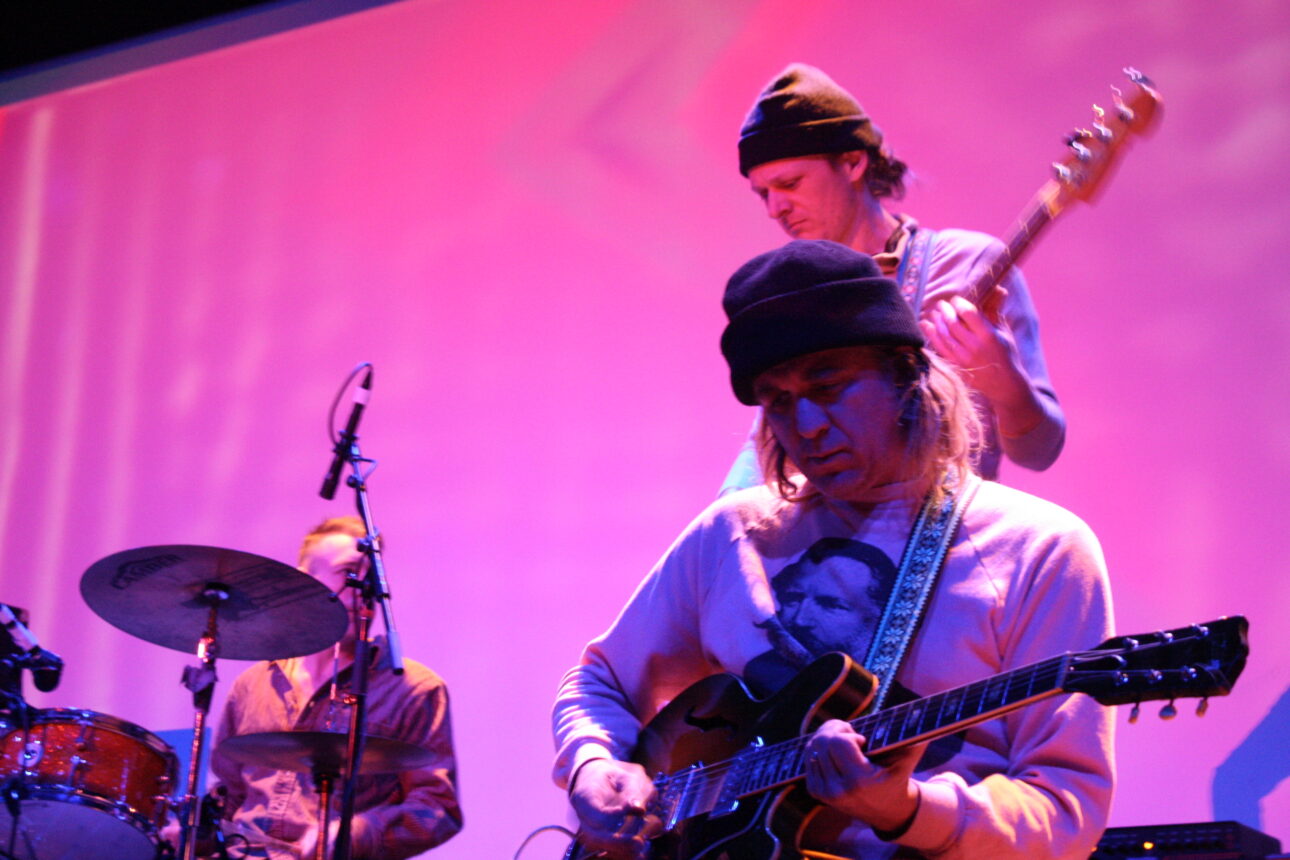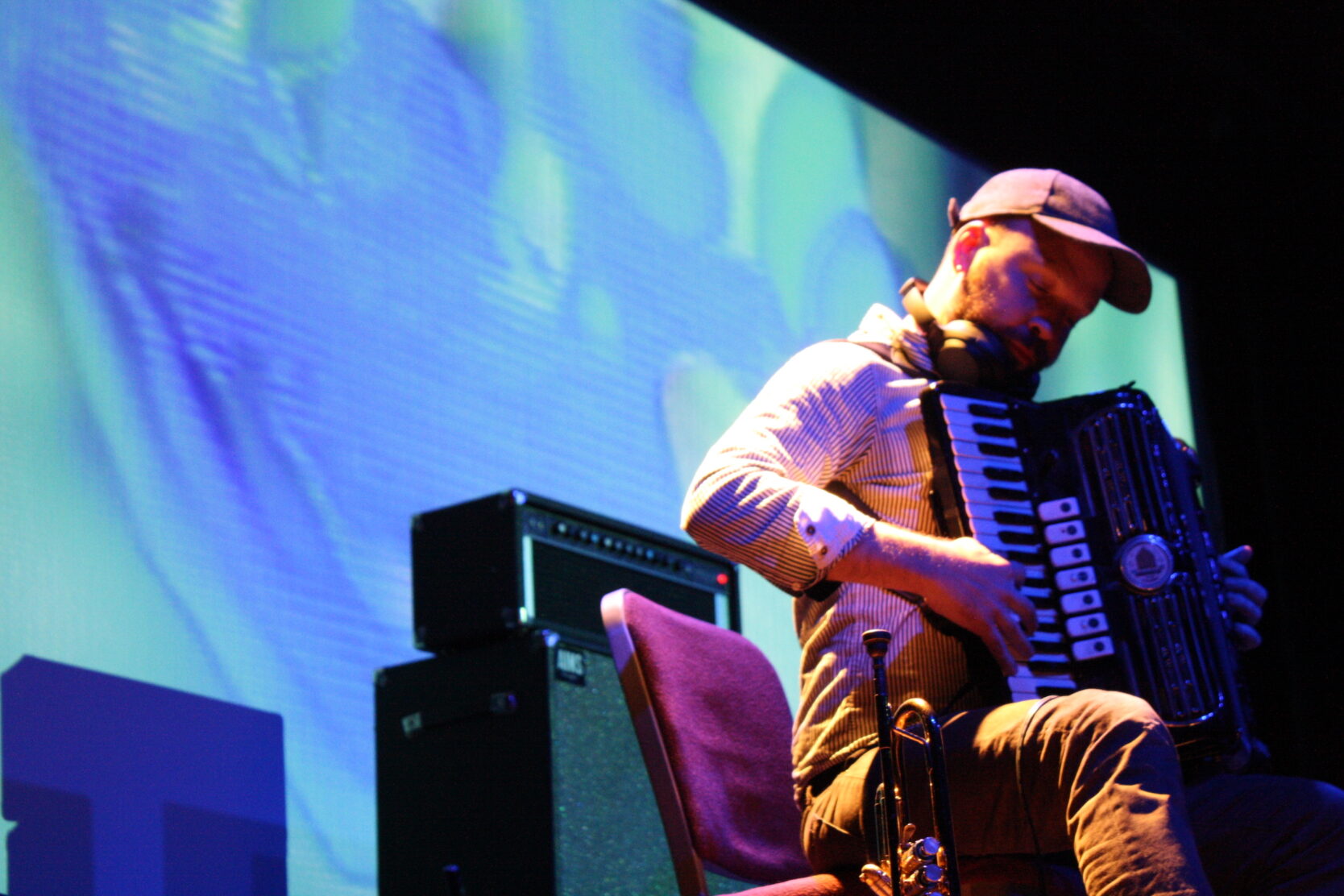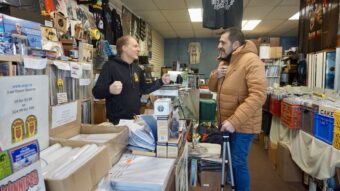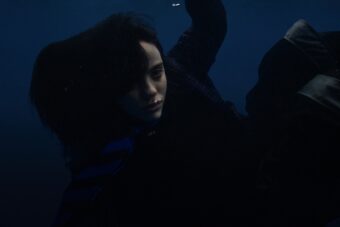Friday, 6:34 p.m.
Should I have brought a real pillow? A blanket?
It’s too late to do anything about it. I’m already driving toward Minneapolis’ Cedar Cultural Center, an inflatable camping pillow rolled into a tote bag on the passenger seat. I think I’m splitting the difference between showing up empty-handed and looking like I’m headed to a middle school sleepover.
It’s the ninth year of the 28-hour drone marathon Drone Not Drones, a benefit for Doctors Without Borders. If you want to see any significant portion of the show’s 65 artists, you’re spending the night. “Bring a pillow if you’d like!” the show page helpfully offers. Fine. I like.

Also Read
15 Artists to Watch in 2023
Friday, 6:52 p.m.
From the parking lot, I already see concertgoers carrying blankets and pillows. I think I made a mistake.
Friday, 7:01 p.m.
Walking through the double doors at the back of the concert hall is like passing through the wardrobe into a drone-drenched Narnia. Something unique is taking place. A few people stand in the back; others sit in the neat rows of folding chairs near the green room. However, most of the crowd is sprawled across the wood floor on mats and blankets.
It wasn’t just that cozy vibe or the low lights and ethereal music of International Novelty Gamelan that indicated something distinct. An intangible set of rules was apparent to everyone who arrived. This was a shared space—a space in which a frangible, communal experience was in process. Anyone could puncture the veneer. So it takes everyone to build it.
Friday, 7:22 p.m.
The couple in front of me unfurls what looks like a futon mattress before arranging pillows and blankets on top of it. I think about inflating the forearm-length pillow still rolled up in the tote bag between my feet and decide against it.
Friday, 7:45 p.m.
Alone-A, the solo vocal project of Alana Horton, draws me from distraction toward a trance-like state. Her voice is layered repeatedly through delays and processing, building to a meditative urgency.
Then the power goes out.
The video projector continuously playing layered images, tone washes, and animations, along with the music, disappears. The silence doesn’t feel out of place, but it’s short-lived. Horton says something I can’t quite hear, and the crowd quickly follows her lead: singing, humming, and whistling, turning her breathy vocals into a communal song.
There’s a beautiful spontaneity to it, but it’s fleeting. The power returns. The music continues.
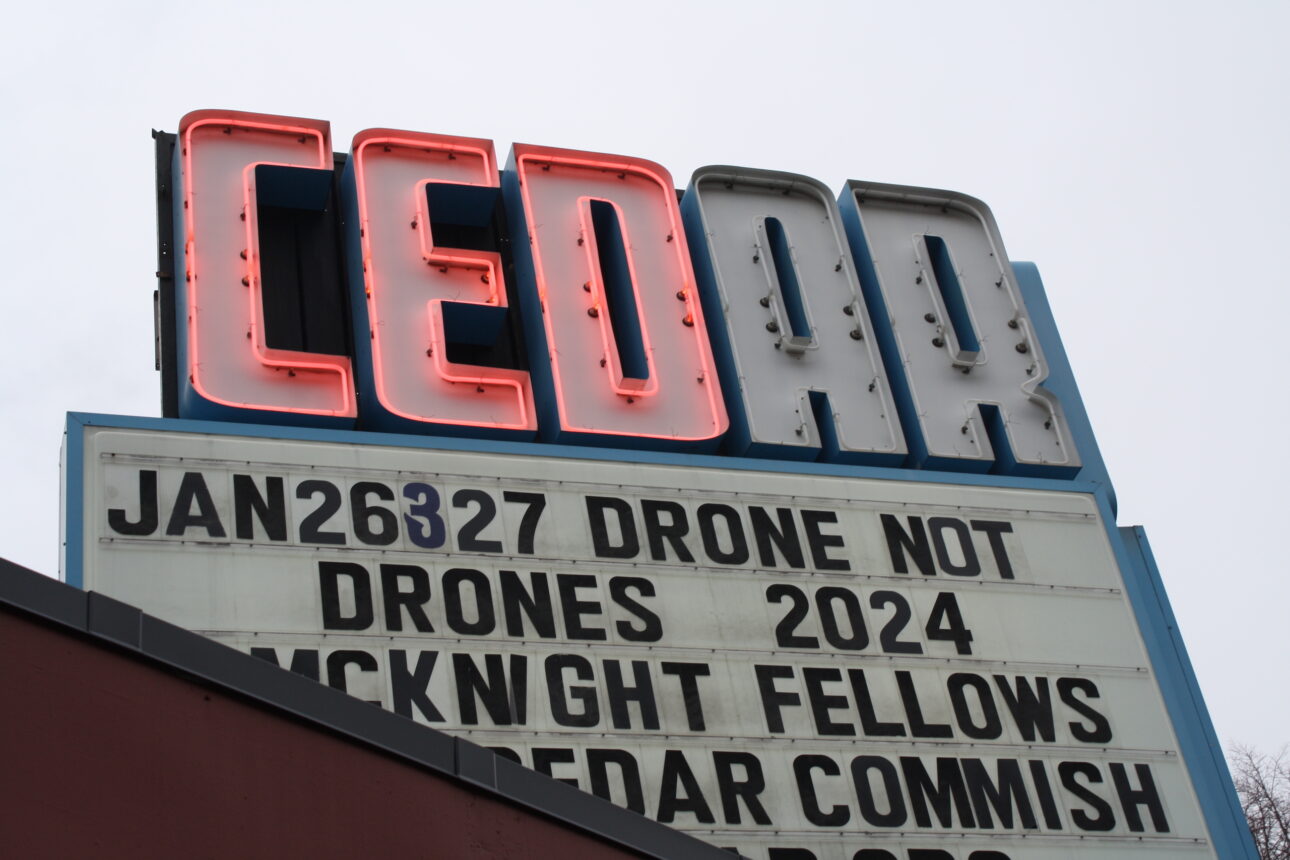
Friday, 9:52 p.m.
Chuck Johnson’s hypnotic pedal steel guitar isn’t flavored with country-infused twang. His compositions feel exploratory, working through the instrument’s possibilities in the drone world. He’s in the sweet spot where this music can feel both effortless and virtuosic.
Most sets last just 20 minutes, with a minute or two at either end given to an improvisational transition so that the music never stops. Some transitions are abrupt, others languorous. Here, Johnson’s set flows into a collaborative set from Johnson and ambient jazz saxophonist Cole Pulice, which itself transitions into a solo set by the latter.
Friday, 11:09 p.m.
A member of IE reads a poem, and I realize this is the first time anyone has spoken a word on the stage. It’s jarring.
I still wish I had a better pillow. Maybe a blanket. Definitely a blanket.
Saturday, 12:03 a.m.
It is immediately clear that Joe Rainey, collaborating with IOSIS, is momentous in a concert that feels almost anti-moment. Rainey’s music merges pow wow with experimental electronic production. His ecstatic vocals create an emotional apex with IOSIS’ cinematic soundscapes.
Drone Not Drones is designed in a way that makes the show a singular event rather than a series of discreet performances like most concerts. Yet Rainey—who has brought his unique voice to collaborations with Bon Iver and Chance the Rapper—and IOSIS are a powerful punctuation mark as the clock turns to Saturday.
The Ojibwe singer is the first performer to directly address the crowd. He’s charismatic as he talks through distorting effects about his son, the NBA, and the mental space genocide holds for indigenous communities. It’s late, but the crowd, swaddled in blankets, is rapt.
Saturday, 1:10 a.m.
This apex moment continues on as Low’s Alan Sparhawk takes the stage. His quartet’s plodding, reverb-rich ambiance evokes Low in a broad way, urgent and raw despite the glacial pace. Their set oscillates from drone to post-rock haze. At times, Sparhawk’s guitar sounds like it’s directly quoting Low songs. It’s always dark, and it’s hard to remember it’s past 1 am.
Saturday, 1:30 a.m.
I’m going to get a blanket.
Saturday, 8:40 a.m.
Coffee in hand, I’m fully awake and weirdly grateful for this blanket. The drone continues unabated. At times, I think the drone has become a sentient organism, unperturbed about what the humans are doing. The lights rise on Brad Bellows and his trombone. Loops and feedback blossom into a forest of interlacing brass blasts. With your eyes closed, it’d be difficult to guess this was a solo trombone set.
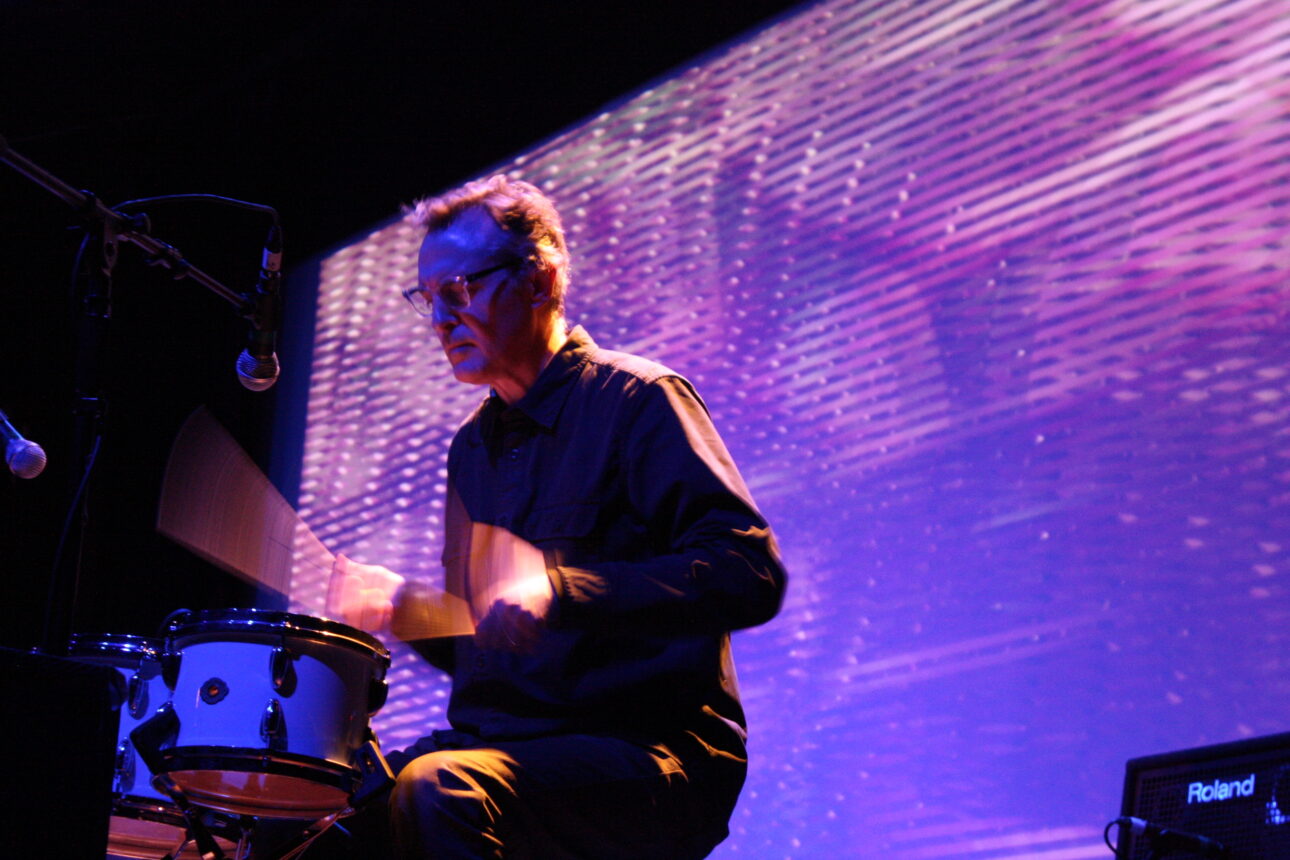
Saturday, 6 p.m.
Jon Mueller takes the stage, but I’m thinking about Bellows again. He drives home that the drone label is a broad umbrella. More than 20 hours into the show, artists arrive who sound nothing like anyone else who has yet played. The Magic Castles’ brash post-rock, the choral music of Mila Vocal Ensemble, the driving staccato of Jon Mueller’s tom drums. I write down: “Drone is an attitude.” I cross it out. I’ve been here a very long time.
Saturday, 8:45 p.m.
Walt McClements, who’s been part of Dark Dark Dark and Hurray for the Riff Raff, begins the night’s coup de grace: a 45-minute solo accordion set. Quieter passages are tender enough to feature the accordion’s breath, an elongated wheeze escaping the bellows. Loops of tuba-like blasts follow in a raucous crescendo, punctuating a virtuosic finale where McClements plays accordion with one hand and trumpet with the other. It’s the kind of swell you feel in your chest. “Holy shit,” I hear someone whisper to a friend behind me near the climax.
Saturday, 9:35 p.m.
As Portal iii—a trio featuring bassist Liz Draper, drummer Chris Gray, and guitarist Charlie Parr—takes the stage, some people slide on their shoes and start rolling up blankets. It’s hard to escape the feeling that the end is approaching.
Saturday, 10:20 p.m.
As Claire Rousay begins the final set, it’s easy to see the community, largely unspoken, shared inside these four walls. Drone Not Drones asks the audience to be part of the event’s essential fabric. Sleep. Relax. Become vulnerable. Everything is part of the ever-changing drone. The cracking open of a beer can, the shuffling of feet, the metal clasps of a guitar case snapping shut—and even the whoosh of air escaping an inflatable pillow before it’s slid back into a tote bag.
